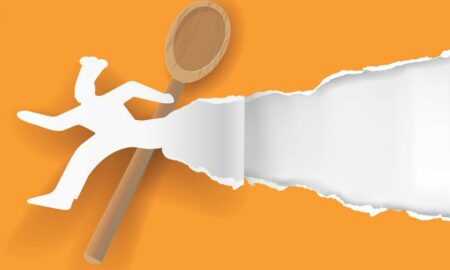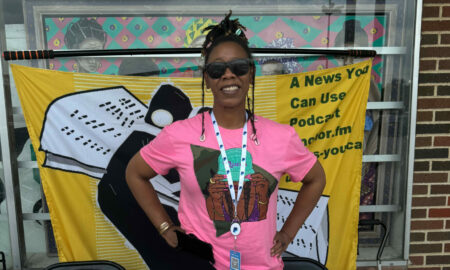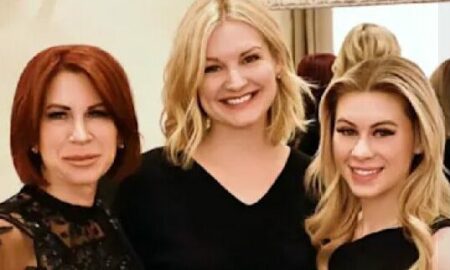

Today we’d like to introduce you to Rosemary Hinojosa.
Hi Rosemary, we’d love for you to start by introducing yourself.
I am currently retired, having had a diversity of careers, mostly nonprofit, throughout my adult life. I began as a public high school teacher in West Dallas. After ten years, I experienced teacher burnout and left the teaching profession. Thereafter, I became a realtor for approximately 15 years – the only profit career I ventured into. However, after the real estate downturn of the 1980s, I continued in real estate part-time while being forced to find a full-time job. From 1988 throughout the rest of my professional career, I felt drawn back to my love and passion – working for and giving back to the community. With this in mind, I worked for several nonprofit businesses, including Catholic Charities, Parkland Health & Hospital System, and Methodist Children’s Home, my last employer before I retired.
Throughout these nonprofit careers, I was able to help people, especially in West Dallas and Oak Cliff, with assistance in needed social services. It was something that was very personal to me since my family had once been in similar situations. I grew up in West Dallas in poverty with little access to medical clinics, full-service grocery stores and reliance on public transit. To supplement my father’s income, we performed migrant work during the summers in East Texas, Oklahoma, and California – picking cotton, potatoes, and grapes. Even as a child, I, too, worked in the fields. This is where I learned the value of hard work. From these experiences, my brother learned that he did not want to work as a migrant worker when he grew up. I, on the other hand, learned that one can get paid for hard work. My three siblings and I all graduated from high school. Being the youngest, I was the only one to graduate from college. It was at El Centro College and SMU, where I became active in social justice and community issues in the late 1960s and early 1970s. Although reflecting back on my childhood, it was my parents and a few wonderful teachers who first guided me into community service.
At El Centro College and SMU, in addition to gaining an education in my respective fields of history and secondary education, I helped tutor and mentor West Dallas school children, outreach to area schools and businesses, collaborated with Mexican American organizations at other DFW universities, advocated for social justice and civil rights issues, protested social injustice and the Vietnam War, and fundraised for special projects. These experiences, as that of migrant workers, have shaped who I am and teach me invaluable lessons that have served me well during my service as a board member of various nonprofits throughout the years. Currently, I am a board member of the Dallas Mexican American Historical League (DMAHL) and a Commissioner on the City of Dallas Landmark Commission.
On the Dallas Mexican American Historical League, I have served as Secretary, curated exhibits, provided public presentations on the history of Dallas’s Mexican American history, and recently created a new initiative – the Emerging Historians of DMAHL. They are young professionals who are being mentored to prepare them for board leadership roles in DMAHL and on city and county historical boards and commissions where Latino voices and representation are woefully lacking. The Emerging Historians will ensure that the DMAHL organization continues to grow and develop as an innovative, historical, and cultural organization that secures its place locally, regionally, and nationally as the leading voice and preservationist of Dallas’s Mexican American history. We adhere to the premise that DMAHL must tell our history “from the bottom up,” in other words, the history of ordinary Mexican Americans in Dallas who are not in the history books but through their hard work, service and contributions, helped to build the city of Dallas.
We all face challenges, but looking back would you describe it as a relatively smooth road?
My life has not been a smooth road. My family struggled with poverty but from those early struggles, I learned determination and resilience. I was a married college student at SMU and a year later, when I became pregnant, I was probably the only pregnant student at SMU. It was hard enough to be poor and a minority at SMU but being pregnant gave rise to ethnic and gender stereotypes, even from SMU professors. Nonetheless, I was determined to get my graduate degree. Unfortunately, having a newborn and being a graduate student became too much and I was forced to leave graduate school. I went into teaching but as a beginning teacher with an annual salary of $9,000, I was still living in West Dallas, taking the same school bus as my students until I was able to afford a car.
Later, as my husband and I became more settled in our employment, we purchased a home and moved to Oak Cliff. We were the first minority couple in our neighborhood. It was later that we realized that one of the homeowners had been our title company manager. Within a year, he and his family moved out. Over the course of 10 years, “white flight” occurred in our neighborhood as more white families moved out and minority families moved in. This has also been a struggle – to realize that people leave their homes simply because someone not of their color moved in. Now, Oak Cliff neighborhoods such as mine are being gentrified. Young, white professionals are moving back in. Fortunately, diversity in employment and social settings has changed perceptions more so today so that neighborhoods, too, are more diverse and less threatening as in the past. I finally earned my graduate degree in my mid-forties. It was a challenge but again, I was determined to see it through. It was not a history degree, as was my original degree plan. After an experience with a toxic boss whose negative management style incorporated racial, gender, and sexual harassment, I was determined to learn about positive management styles. My graduate degree is in Organizational Management with state certification in Conflict Mediation.
Can you tell our readers more about what you do and what you think sets you apart from others?
I’ve had various leadership roles throughout my career. At Parkland Health & Hospital System. I was a member of the leadership Resource Team of the Community Oriented Primary Care Division of the hospital. At one time, I held three roles during a one-year period. My main job was Coordinator of the external transportation program of Parkland patients. I had several scheduling employees and managed the private contract for a fleet of ten vans. I was also assigned as Interim Site Director of 10 school clinics. Additionally, I was the Coordinator of the Shared Medical Appointments program, an innovative initiative to generate physician efficiency and improved patient outcomes. My determination, detail orientation, customer service, follow-through and resilience once again helped me through the additional workload.
I believe one thing that sets me apart is my creativity, innovation, attention to detail and hard work. I received an Innovation Award from Northwood University for an initiative to successfully outreach to Spanish-speaking parents of public-school students. Not having much familiarity with Parent-Teacher Associations, many were not attending the PTA. I developed a plan to have a special program with the parents, teachers, counselors and principals, as well as a Spanish-speaking staff if the school personnel did not speak Spanish, to meet prior to the end of the school day and get to know each other and their roles and responsibilities where they could feel more comfortable in a smaller, Spanish-speaking setting. I have been a co-creator of affordable housing nonprofit and created another nonprofit dedicated to youth gang prevention. Designing the programs and applying for grants included a lot of hard work, attention to detail, good presentation skills to prospective donors, and of course, good design and implementation.
I have continued to draw on my creativity and innovation as well as attention to detail in my role as a board member of DMAHL. I thoroughly research exhibit designs around the country to seek how to best design an exhibit. I am very proud of the work I did to help make our 2015 military exhibit one of the most beautiful and successful of all our exhibits. Additionally, I have encouraged intentionally tying our historical exhibits to a theme, in particular a commemoration or anniversary of a historical event and/or era. For example, during this Coronavirus shutdown, I knew that we could not safely provide physical exhibits at a public venue as we have done in the past. We had to reimagine how to provide virtual exhibits in order to maintain our visibility with the public. But how to be different this year? I created an idea to utilize the theme of the 2020 Coronavirus with two exhibits. The first would be a Dia de Los Muertos (Day of the Dead) exhibit in remembrance of our own ancestors, including those who had lived during the Spanish Flu Pandemic of 1918.
The second exhibit would be on Veterans Day in honor of our Dallas Mexican American veterans who served the U.S. during WWI and the Spanish Flu Pandemic of 1918. Together with the technologically-savvy Emerging Historians, we were able to curate the exhibits and place them on our DMAHL website. Two of us worked until 3 and 4 am over several days designing the exhibits. We promoted them with our DMAHL members, family, friends, and the general public. Our creativity and hard work were richly rewarded. The exhibits were successfully lauded by the visitors to the website and garnered many positive comments. Currently, I am already envisioning smaller but more numerous virtual exhibits throughout the year in contrast to our major annual exhibit. I believe this would continue to keep us in the public eye more frequently and based on the themes, particularly around holidays of significance to Mexican Americans, might gain us, prospective members. I am a member of the Ledbetter Barrio committee of DMAHL, which worked for more than five years to preserve the historic Eagle Ford School.
Now, in my role as a Commissioner of the City of Dallas Landmark Commission, I am most proud that I was able to be one of the decision-makers to officially designate the school as a City of Dallas historical landmark in 2019. I am now assisting other Mexican-American neighborhood groups with information and resources on how to begin the process for the historical designation of a structure in their neighborhoods.
Do you any memories from childhood that you can share with us?
My favorite childhood memory was being with my friends at school and in our neighborhood. At school, we would play tetherball during recess or hopscotch, etc. At home in our front yards and in the streets, we would play kickball, Red Rover, jacks, marbles, etc. My family was a Catholic family, so I loved going to church and seeing my friends there. We would go to Cathechism classes together, made our First Holy Communion together, and later during the month of May, the little girls would wear our white Communion dresses and take flowers up the church aisle to place at the feet of the statue of the Virgen Mary. During the summers, the church would sponsor “Jamaicas,” or fundraising festivals that celebrated Mexican traditions such as folkloric dance, music, and Mexican food. And, after Sunday services, many of our mothers would volunteer to cook Mexican breakfast, again to raise funds for the church. As teenagers, the church provided a Catholic Youth Organization and a place to gather and socialize. As my comments imply, the Catholic Church and our faith was very important to us. Nonetheless, twice a year, we went to Brother Bill’s Baptist Church. During the Christmas season, the children would line up outside the church to get rag dolls for the girls and wooden toys for the boys. And around the New Year, we would once again line up to get brand new Oxford shoes for school. These are all childhood memories that are engraved in my mind.
Pricing:
- Dallas Mexican American Historic League (DMAHL) membership fees:
- $25 – General membership fee
- $5 – Student fee
- $300 – Lifetime member fee
- $500 – Corporate member fee
Contact Info:
- Email: rrhinojosa@att.net
- Website: dmahl.org
- Instagram: @dmahlofficial
- Facebook: Dallas Mexican American Historical League
- Twitter: @DMAHLOfficial

























